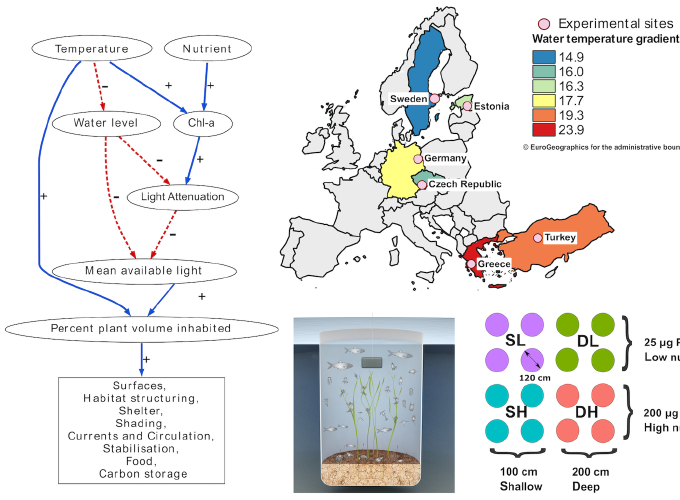Shallow lakes constitute the largest proportion of world’s lakes. They provide high biodiversity and important ecosystem services. Macrophytes play a key role in functioning and structuring of these ecosystems. With the ongoing climate and land-use change, variations in temperatures, precipitation patterns, nutrient runoff and water-levels are predicted, which are the key drivers of macrophytes. Therefore, it is important to understand their responses to climate change to variations in their main drivers (nutrients, water levels and temperature) and anticipate early warning signals for mitigation and management reasons.
In our unique, large-scale Pan-European experiment along a temperature gradient, we investigated interacting influence of temperature, nutrients and water-level on the growth and dominance of shallow lakes’ submerged macrophytes. Our results showed that positive temperature effects on macrophytes are highly contingent on nutrient-status and water-level. Particularly under eutrophic conditions evaporation-driven water-level change, impacting underwater light-conditions, can act as a switch for whether macrophytes maintain dominance or are out-competed by algae. Thus, water-level change can compensate for negative eutrophication effects.
Relevant publications
Z Ersoy, U Scharfenberger, DL Baho, T Bucak, T Feldmann, J Hejzlar, EE Levi, A Mahdy, T Noges, E Papastergiadou, K Stefanidis, M Sondergaard, C Trigal, E Jeppesen, M Beklioglu (2020). Impact of nutrients and water level changes on submerged macrophytes along a temperature gradient: a Pan-European mesocosm experiment. Global Change Biology, 26, 6831-8851. https://doi.org/10.1111/gcb.15338
